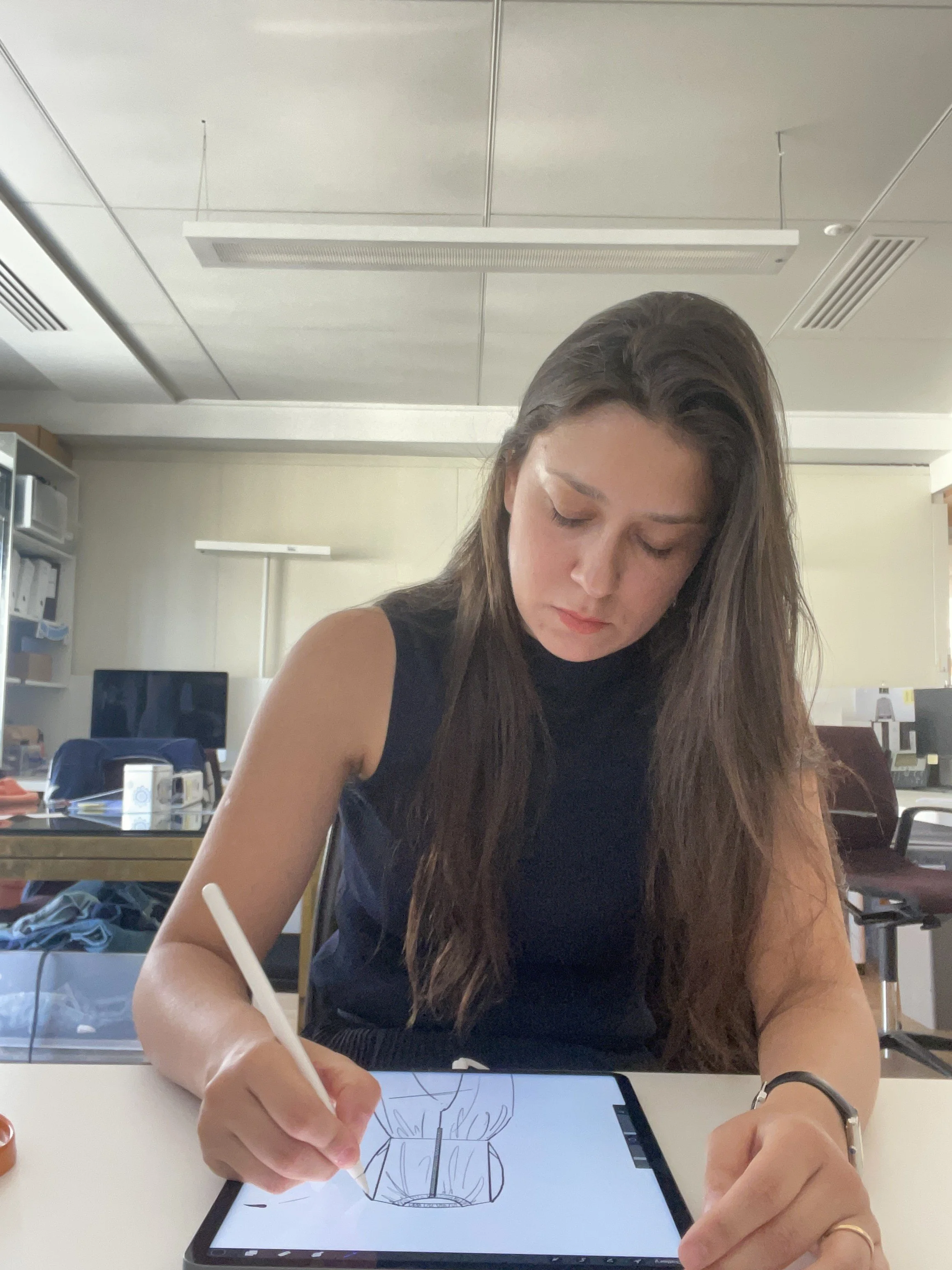Meet the Brazilian Designer Who Conquered Louis Vuitton, Hermès and Marine Serre
Renata Estefan grew up listening to stories about her great-grandmother’s elegance on a farm in the Brazilian countryside. Decades later, she transformed those memories into a passport to the heart of European luxury, having worked at Louis Vuitton, Hermès and Marine Serre. She carries the discipline, lightness and persistence typical of someone born far from the spotlight. This is the journey of the Brazilian who left her mark on the most sought-after ateliers in the world.
Renata was born in Nova Friburgo, in the mountains of Rio de Janeiro, and grew up fascinated by her great-grandmother’s stories, a woman passionate about dressing well. “The old photos made me dream; there was a lightness and elegance rarely seen today,” she recalls. It was there that her dream to dress people with that same refinement was born.
She soon realised that passion alone would not be enough to cross the Atlantic. “I understood all that I didn’t know. There was a vast spectrum of creative and technical skills these brands demanded, which I lacked. So, I sought the right colleges and courses and committed myself to mastering them,” she says.
Central Saint Martins
She arrived at Central Saint Martins in London, where she developed the master’s project that remains her most special work and opened doors to the great maisons. Inspired by country life, the equestrian world and royalty, she created an original collection. “There, I could set my own brief and made a collection with everything I loved. Six years on, I still cherish those pieces. My soul is in each one.”
RENATA ESTEFAN- FINAL COLLECTION
Maintaining her vision amidst criticism, including from the school’s director at the time, was not easy. But standing her ground paid off: after graduating, feedback came from Dior, Chanel, Givenchy and Hermès, confirming that defending what she believed to be beautiful was the right path.
Luxury Behind the Scenes and the Weight of Origins
Behind the scenes of European luxury, Renata learned what it means to work for top-tier maisons. “These brands see beauty differently from what a young Brazilian is accustomed to. They seek a modernity outside the box, preferring a neo-good taste to the obvious classic style.”
She witnessed the almost surgical level of precision in houses like Hermès and Louis Vuitton. “One day, fifteen people spent over forty minutes discussing the fit of a dress. It felt like an operation. I was fascinated.” She also discovered details that speak volumes about the high-luxury environment: “At one of these brands, smokers aren’t hired to prevent cigarette smell reaching the clothes. I thought that was spectacular.”
Renata explains that within studios, the most sought-after skills include image research, hand drawing or using Procreate, Photoshop, and the ability to translate this research into innovative product creation.
Despite an aesthetic now finely tuned to European tastes, Renata knows how much she was shaped by Brazil. “Brazilians do more with less; there’s a culture of service and dedication. I would arrive early and leave late, and that caught the attention of my bosses.”
But being away from her own country carries its weight. “The longing for family hurts. And not being European matters too, naturally, they connect more among themselves. So, I had to compensate by working twice as hard, dedicating myself beyond expectations.”
The toughest moment came at the start of the pandemic, just as she was about to be permanently hired by Hermès. “The government couldn’t issue my documents, so I had to return to Brazil. But the way the directors reacted, what they said, the party they threw to cheer me up… that meant more than the job itself.”
What Lies Ahead
Today, Renata’s fuel is seeing designers she admires praise her work. “That makes me want to continue. And the passion I have for dressing chic women nourishes my soul in a way I can’t explain.”
She dreams of changes in the industry, especially in Brazil. “I’d love the country to understand it doesn’t need to have the creative obligation to put Brazilian references in every collection to be relevant abroad. And to invest more in training its designers overseas.”
Renata doesn’t plan to launch her own label. She prefers to find a maison that values her vision, in a healthy and respectful environment. In the future, she hopes to open a school in Brazil, with an international standard, to teach the techniques used in studios in Paris, London and other places she has worked.








